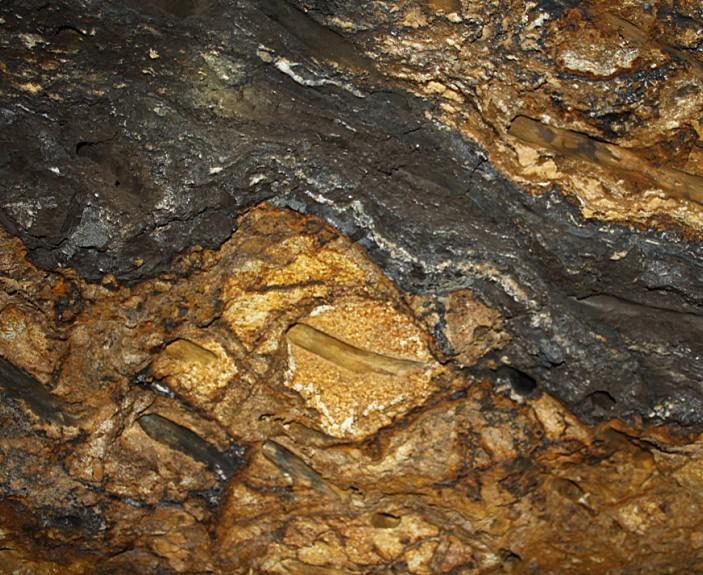The Beauty of a Cemetery
/“Go rest high on that mountain, ‘Cause, Son, your work on earth is done. Go to Heaven a shoutin', Love for the Father and the Son.” Vince Gill wrote and recorded Go Rest High on that Mountain as he mourned the loss of his brother. These are beautiful lyrics for anyone working through such a loss, as we all must at one time or another. Unfortunately, somehow a lot of superstition has crept into our thinking about death and graves. This superstition is of course unfounded, but it’s supported and exacerbated by Hollywood so I won’t try to fight it in this particular forum. However, as with many weekend genealogists and hobbyist-historians, I spend a lot of time in cemeteries and that’s gotten me thinking about death and burial from a historical perspective.
John W. Key poses with his wife's tombstone. Upon john's death, his children erected a new, double stone. However, his youngest son was unable to part with the original stone and it now resides at his home place. I wonder if someone will find it there in years to come and think the grave is there too?
We draw a certain comfort and closure from knowing where our loved ones are laid to rest. An awful lot of people benefit from visiting those graves, especially during the very difficult early days of mourning. This is common to humanity and no doubt it is the reason that historically only the most barbarous peoples have failed to properly bury the dead, even the dead among their enemies.
As a research tool, cemeteries are a great source of information. Usually we consider this information more trustworthy than government documents like census or immigration records where those people taking down information had little reason to be particularly accurate, especially with foreign names. But when we die we hope to be among family or loved ones and those are usually the people who have the best information about us. In my family research, one of my ancestors emigrated from Italy; I have found three different spellings of his name and several birthdates. Since he died among his children, it seems safest to trust the dates and spellings they chose to use on his tombstone.
Historically, people have often accepted misspellings of their names. Immigration clerks were notorious in their inability to decipher the myriad of accents and spellings. Handwritten records were easily misread and hand-copied records could multiply errors. One famous misspelling that stuck was Ulysses S. Grant. He was born Hiram Ulysses Grant but upon entry to West Point, his name was mistakenly entered “Ulysses S.” and he was never able to get the error corrected. Eventually, he resigned himself to just be Ulysses S. Can you imagine how much easier it would be for people who were unfamiliar with the language and probably in near-shock by their new surroundings to just not worry about how their name was written? Most of those poor immigrants were so happy to be on solid, American soil, they probably would have taken almost any name.
Dates are a very firm data point in our modern world. We are frequently asked not just our name but our date of birth or social security number to differentiate us from a lot of other citizens. However, in the not too distant past birth dates weren’t nearly so firm. It seems like the birth of your children would be dates you would never forget, but the government advised my grandmother that her birth date was a couple of days after the date she had always celebrated. Whether that was a clerical error or her family simply lost track of the exact date will never be known. Maybe with eleven children exact dates are no longer so important to you. Certainly there have been a lot of folks in past generations that knew only an estimation of their age, but we can still rely on those people who were closest to them to record the best information possible on the stone that will memorialize their friend or family member.
Understanding that these memorial gardens can be both comforting and informative, perhaps you can understand my sadness when I find a ‘lost’ cemetery. You’ve seen them too, two or three stones posted along the side of a roadway or fenced out of the midst of a field. It was a special place to some family who chose to bury there and now you wonder if anyone even knows where the graves are. I wonder whether the family ever comes to decorate or check on the condition of these graves. I wonder whether the names are logged in someone’s genealogy or would these graves fill a missing link for someone. My family has a lost cemetery we still haven’t found. My great-great-great grandmother died many, many years before her husband and while her children were tiny. We assume she is buried with either no stone or an un-inscribed stone and we believe the grave to have been part of a small cemetery at the time. Today, woods surround that area and there is not maintained cemetery. Hunters and hikers frequently happen upon such places. I remember being on a wilderness trip in Florida and finding an old cemetery. It was such a sad place for there was no roadway leading to it and I couldn’t help but feel no one had been there in a very long time. These graves represented someone’s family. Even in established cemeteries, there are often numerous graves that have no name attached to them. I would love to know why some of these old graves were left with only rough stones and no name. One of my great-great grandmothers had lost several babies and while she was recuperating, the men of the family buried each one in turn with no stone at all. Years later she would say, “Only God knows where my babies are buried.”
Searching for stones and information from them is not always so dreadful. Some of our old cemeteries have now been mapped, listing all of the stones with all of the information they contain. With this sort of resource, we can do lots of research in a library or even from your own home if the listing is published on the internet. That is a convenience I will take advantage of anytime I can. Yet there is something inspiring about walking among the stones memorializing people I’ve been working hard to research. I can see their names and immediately I’m reminded of stories about them. And when I see the neighboring stones, carrying the same family name, more questions always arise – and the research-adventure continues.









